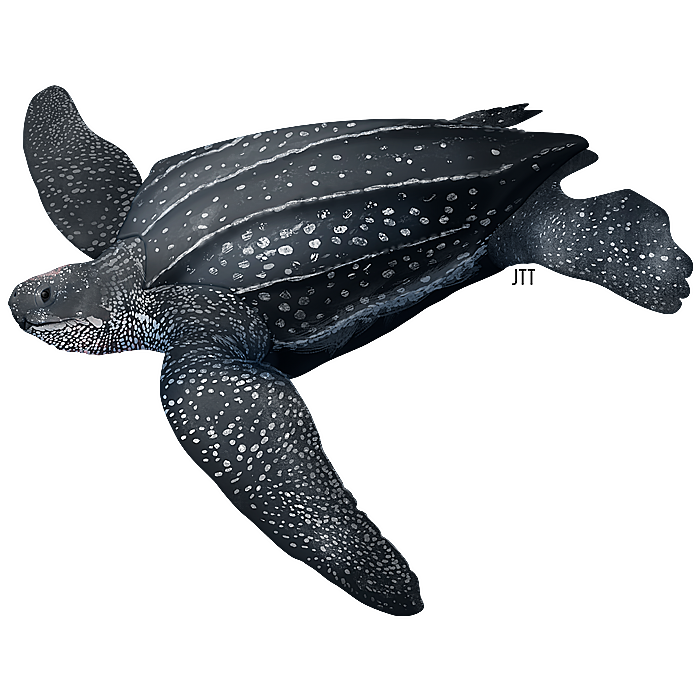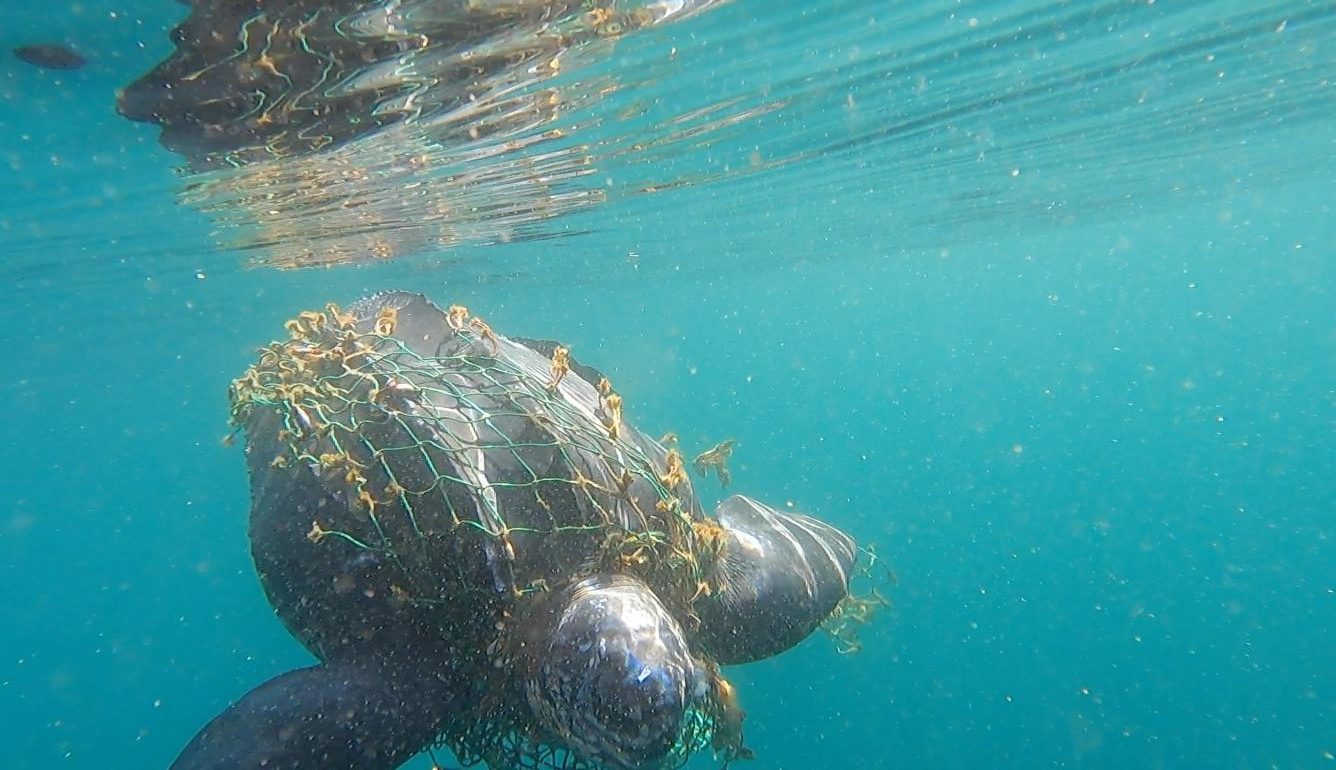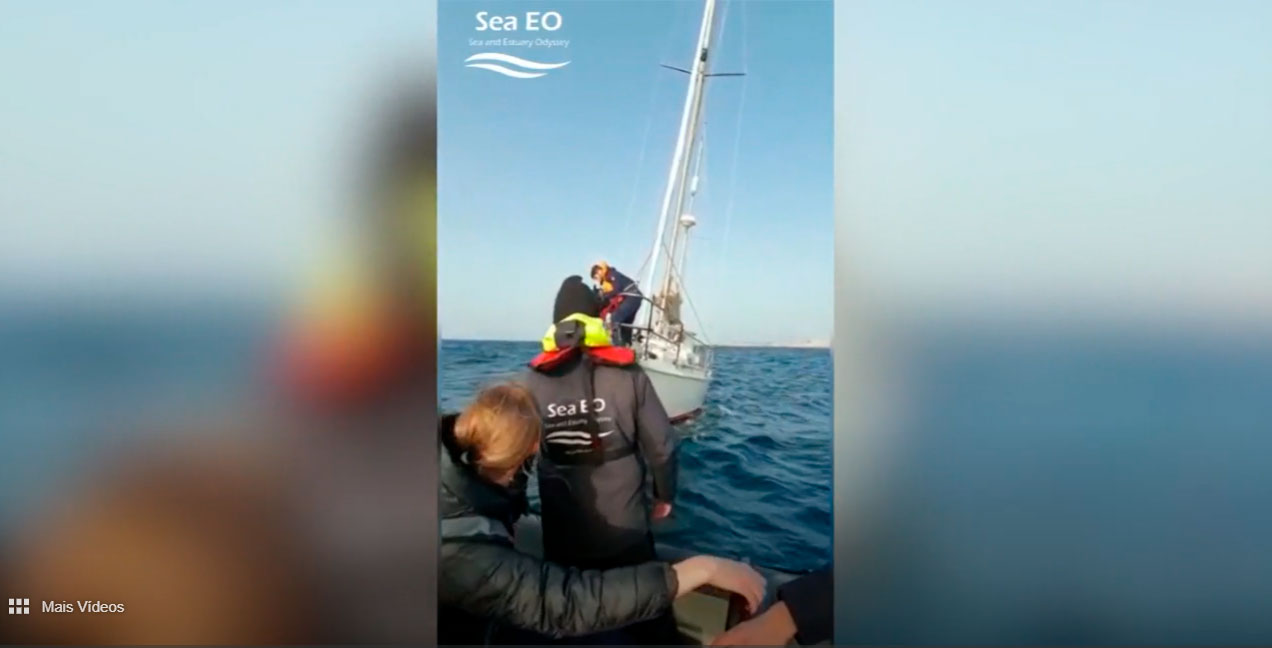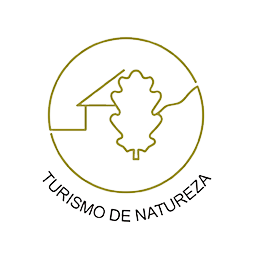Threatened Seaturtles
Of the 7 Sea Turtles, the Leatherback Turtle (Dermochelys coreacea) is the largest specie of sea turtle that exists. It can reach 3 meters in length and weigh around 500 kg and it can reach up to 305 years of age. Its color is bluish-black with light and irregular spots; in the case of females, the tail is smaller and they have a pink spot on the top of the head.
Its diet is varied and consists of jellyfish, molluscs, algae, fish and crustaceans, hence its proximity to the coast during feeding and reproduction. Although this specie exists in Portugal, it does not breed on the Portuguese coast.

Unfortunately, the biggest threat is accidental capture in fishing gear, capturing their eggs and often ending up trapped in ghost nets that are lost at sea. On October 14th, during a Dolphin Watching tour in Lisbon, customers and crew had the opportunity to observe one of these turtles wrapped in a fishing net; despite our efforts, we were unable to approach the animal to remove the net, because fortunately it was feeding and dived as soon as we approached.
This species has a Vulnerable conservation status.
SeaEO-Tours responds to sailboat Mayday after an Orca attack
On the 21st of February, SeaEO-Tours team received a VHF communication with a MAYDAY (distress call) resulting from an orca attack, when finishing another dolphin watching tour, near Meco.
We quickly tried to understand the distance they were from us and, without hesitation, we went to their aid.
It was a 12 meter sailboat with 4 people on board. The boat was about 3 Nautical Miles West of Cape Espichel adrift because of contact with four Orcas that broke the rudder.
Arriving at the place, we verified that all crew was well and with life jackets. The Orcas had already gone their way. When we were preparing the tow, the ISN (Instituto de Socorros a Náufragos – National Maritime Authority), also arrived at the site, which took them safely to Sesimbra port.
Sidónio Paes, Managing Partner of SeaEO-Tours and marine biologist, is collaborating with the Orca Atlântica Working Group. He emphasizes that “We cannot forget that we are in the natural habitat of the Orcas. There is always a risk, but what we can do is mitigate this new behavior. We have to understand how we can defend ourselves without hurting them”.
Are Orcas attack frequent?
In recent years, there has been an increasing number of attacks by Orcas on sailboats in the Iberian Peninsula, which, in most cases, result in the rudder becoming demaged. There is no record of direct attacks on humans.
What motivates the attack?
It is not known for sure what is the origin to this interaction between Orcas and sailboats. The topic has been well followed since August 2020, when the first interaction took place, by groups of marine biologists and is the subject of studies. Although there are no final conclusions, the attacks reported so far are triggered by females and juveniles, quite well studied by the biologist communities of the Iberian Peninsula.
Portuguese news on the subject:
TVI: Group of orcas destroy sailboat rudder in Sesimbra. View rescue footage
CNN Portugal: Group of orcas destroy sailboat rudder in Sesimbra. View rescue footage
Sol: Sailboat attacked by group of orcas in Sesimbra
CMTV: Group of orcas attack sailboat with crew on board in Sesimbra
Notícias ao Minuto: Group of orcas attack and destroy sailboat rudder in Sesimbra




